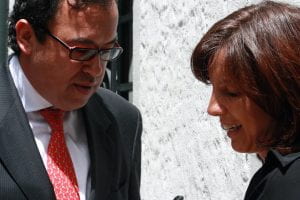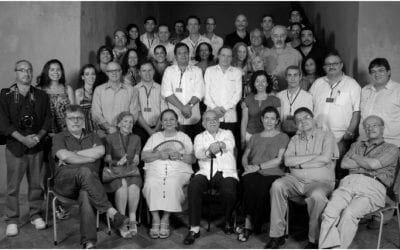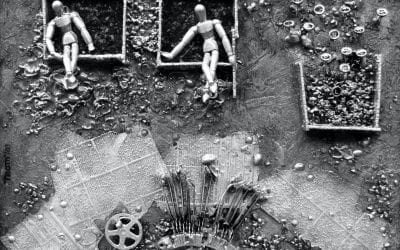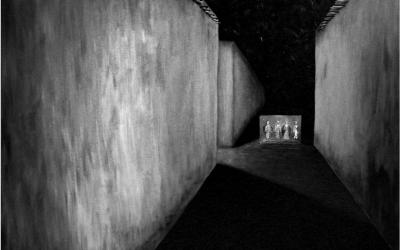La Silla Vacía
Eight Ways the Internet Changes the Way We Think about the News
In 2007, during my Nieman year at Harvard, I decided I wanted to start an interactive website, one that would probe Colombia’s power structures. As I started telling my colleagues about my idea, the most frequently asked question was, “What’s the business model?” I still don’t have a real business model, but lasillavacia.com has become the fourth most consulted source of information for opinion leaders in Colombia.
Too much has been written about how the Internet is changing the face of journalism. Journalists are spending way too much time thinking about the business side of our profession, exactly the only thing we know very little about. We are not trained to think about how to make money; we do not have the skills to do it, nor the interest.
And while we either break our heads thinking about the business side or panic about the impending end of our profession, the essence of journalism is changing dramatically. The narratives, the sources, the relationship to the audience, the production systems are no longer what they used to be. Not even the concept of news. And this is something about which we journalists might have something to say, because I think that the future of journalism will be marked by art and technology.
At La Silla Vacía, an investigative blog on politics in Colombia I created two years ago, we have made it our goal to think about where journalism should head and to try to move in that direction. The business part is still something we have to think about but we have an Open Society Institute grant and I’m an Ashoka-Knight Fellow, which means part of my salary is taken care of for the next three years, so we can spend some time doing journalism.
We’ve covered stories from corruption scandals to profiles of who’s who in Colombian politics. La Silla Vacía anticipated the Constitutional Court’s decision to overrule the law that would have allowed President Uribe’s second reelection and became a must-read during past elections because of its scoops.
The first thing we realized when we started La Silla Vacía is that the Internet does not only change the distribution of the news. It also changes the way we think about the news. Below are eight ways in which we now think about news at La Silla Vacía.
1. Raw information is the story
Described in very simple terms, a journalist usually interviews several sources, reads documents, experiences the place of action (when all the reporting is not done over the phone), processes all that information and writes a piece. At La Silla Vacía we still do that, but we have also discovered that sometimes raw information is as appealing as a processed story, and we may use it as a story in itself. We have a section called La Movida, where opinion leaders have a password to sign on to the page and answer the “question of the week” in 1000 characters. It is an opportunity for users to have direct access to what leaders think without the mediation and interpretation of the journalist. At the same time, at La Silla Vacía we publish documents as raw information, with little notes similar to a post-it with some explanations, but letting the document speak by itself. Or we cover judicial proceedings vía Twitter, simply transmitting what is going on with no interpretation.
We are also trying to build interesting databases and offering a database as the story in itself.
2. The context is the story
As Jean François Fogel said in “20 comments about the cyber giant http://www.letraslibres.com/index.php?art=12197,”“the news in cyberspace is not an item that’s hidden, but a bit of information or a fact that someone rescues from the avalanche of information” (“La noticia en el ciberespacio no es algo que se oculta, sino un dato o un hecho que alguien rescata del caudal de informaciones”). At La Silla Vacía we are convinced that context is not only useful background information of news but the news itself. Offering the systemic knowledge to users about the topics discussed, putting together all the bits of news about one topic in a single story, becomes the news. We have also created Topical Trends, a site on the main political issues so that users can follow the contexts they are interested in more easily.
3. Transparent journalism: the process of making the story is also the story
Colombia novelist Gabriel García Márquez used to say that if you wanted to learn how to write, you had to understand the ‘seams’ of the story, how it was done. We have applied that concept to La Silla Vacía and in several very special stories we not only tell the story but show the whole reporting process. We publish all the documents we used, the notes we took, the FOIAS (Freedom of Information Act information) we obtained, every raw piece of information that helped us build the story. In that way, users can read the story at two levels, evaluate our conclusions with the reporting they are based on, and also use the documents for their own purpose. This gives us more credibility.
4. The news is a collective story
At La Silla Vacía we are convinced that social networks are the base of the new media. The information is created and distributed by many-to-many. We therefore try to create the conditions necessary for users to generate useful information, to distribute it, to fact-check it, and to complete it. We post the stories we are working on on Facebook, asking for new sources. We open up a debate around the stories in our forum link and then we post the stories we write on Facebook-related groups to nurture them with our new information. We see La Silla Vacía as a node that feeds from several networks, which at the same time are fed by La Silla Vacía. And we really treat our users as part of our staff. They give us ideas, write stories that are edited by our audience editor, follow up on questions by other users and work on suggested story ideas. At La Silla Vacía, news is the result of a collective work.
5. The real-time story
Just as important as offering the contextual story, we are convinced that immediacy is key. We cover many stories in real time using Twitter, Cover it Live, and U-stream. Probably as a consequence, most of us have become voyeurs. Readers (or readers/news consumers?) want to see what is going on, without any mediation from journalists. Just see the stream of life going on. At La Silla Vacía we have applied that concept to cover legislative sessions in Congress when the approval of a key law is pending; we have covered live important trials; we have created the conditions for users to interview important politicians in real time and get their answers in video.
6. The news is an immersion experience
Half of our audience grew up playing video games. Our goal is to offer them, in a couple of years, the possibility of having an interactive experience in the news: to offer them the possibility of being the virtual protagonists of our stories, to experience the dilemmas of policy makers and to ‘intervene’ in the story with their choices. We are following closely the developments of people like Nony de la Peña, the USC Annenberg researcher who has become a pioneer of immersive journalism with games like Gone Gitmo that recreates life at Guantanamo in Second Life, because we are convinced that this is where journalism is heading.
7. The tools are the story
At La Silla Vacía we have come to understand that tools are sometimes the story. Applications such as Urtak, a tool that allows users to formulate binary questions and to answer them as a random survey, tell a story in itself. With our webmaster, we are trying to develop or to personalize tools that already exist because we are convinced that news is also produced in the interaction of users with specific information with the rest of the community of users.
8. The story is the aggregated and curated conversation on the web
What happens in cyberspace has become almost as important as what happens in real life. Cyberspace is the new public space where the debates are going on. Curating that conversation is a key role of an Internet journalist. At La Silla Vacía we monitor those conversations all day and aggregate them in a Twitter space called La Silla Dice, offering the links to the most interesting pieces of information. By reading the links of the day, you get the story of the day.
Spring 2013, Volume XII, Number 3
Juanita León is the owner, founder and director of lasillavacia.com, an investigative political blog in Colombia. She is a 2007 Harvard Nieman Fellow and a Columbia Journalism School graduate. She is the author of Country of Bullets, about war in Colombia.
Related Articles
New Journalists for a New World
I received a surprising phone call one day in late 1993, when I was the director of Telecaribe, a public television channel in Barranquilla, Colombia. The caller was none other than Gabriel García Márquez. “Will you invite me to dinner?” he asked me. “Of course, Gabito,” I…
Latin American Nieman Fellows
A few days after I arrived at Harvard in August 2000 to begin my work as curator of the Nieman Foundation for Journalism, Tim Golden, an investigative reporter for the New York Times in Latin America, phoned me. “Could I find a place in the new Nieman class for a Colombian…
Freedom of Expression in Latin America
In June 1997, Chile’s Supreme Court upheld a ban on the film “The Last Temptation of Christ,” based on a Pinochet-era provision of the country’s constitution. Four years later, the Inter-American Court of Human Rights heard a challenge to this ban and issued a very different…





